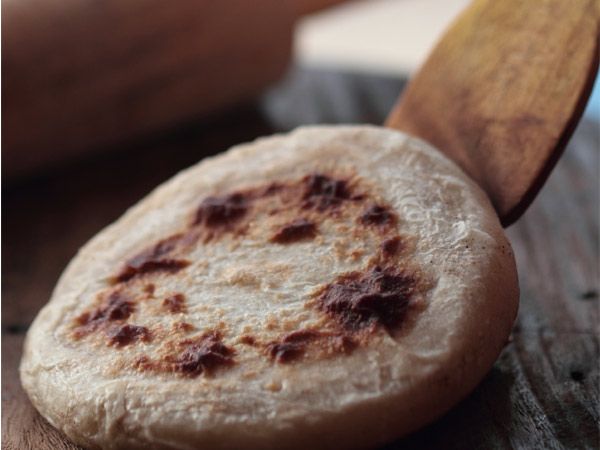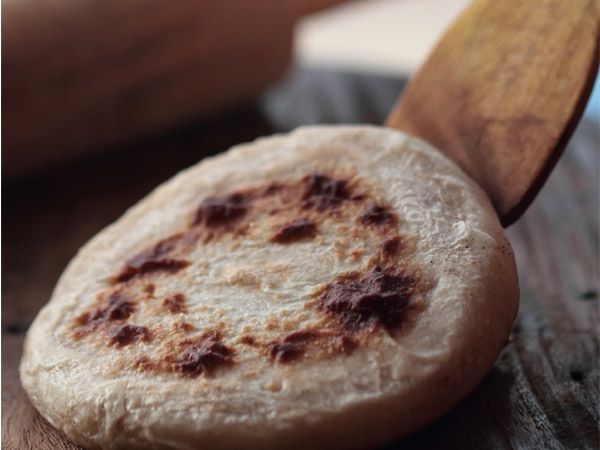
The various kinds of rotis prepared in India
A while ago, I had written an article on bread and its history. That, of course, was the kind of bread we get in bakeries or at grocery stores – a ‘loaf’ of bread so to say. But then we have our Indian version of breads too – the various rotis and parathas and theplas. Had Marie Antoinette known what an unimaginable variety of breads we have in India, she probably would’ve thought it easier to distribute cakes amongst the people after all.
Where do I start? Let’s begin with the humble roti. Made in every house in the country, rotis themselves are so different in different parts. We have thin phulkas, thick rotis and also the Maharashtrian ghadichi poli (which literally translates as roti with folds). Then come the parathas; plain ones, stuffed ones, layered ones. Stuffed with everything from potatoes, cottage cheese, radishes, spinach, onions to the modern (and hugely popular) cheese and mushroom, there is no end to the innovations in parathas.
We also have fried breads, the little puri being the most common, followed by its big brother the bhatura. There are baked ones too! The famous Rajasthani dish, Dal Baati, is one example. The Baati is actually a bread that is baked in charcoal which gives it that wonderful smoky flavour. Another beautiful roti from Rajasthan is the Khoba Roti which is pinched all over the surface to give it a unique design.
Puranpolis and Gulpolis (breads stuffed with sweetened mashed lentil filling and jaggery respectively) are a must for festivals. Maharashtrian folks also excel in making “bhakris” using many kinds of flours like wheat, barley, ragi, rice and jowar. The Guajaratis will carry their Methi theplas whenever they travel as well as ‘dhebras’ (bread made by mixing bajra flour, a little wheat flour and some spices, which is then kneaded with yogurt). Come winter, and the Punjabis just cannot do without their Makki di Rotis (rotis made of corn flour) to relish with their Sarson ka Saag. The Buddhist ‘Baleps’ are also small fluffy breads made of all-purpose flour (maida) and can be found being made in huge quantities in Buddhist monasteries. And then there is our very own answer to the pizza, the delicate Roomali Roti, which is an art in itself.
Perfect rotis made using kneaded dough need to also be perfectly roasted, fried or baked
While all these breads are very common, making them is not as easy. Indeed it is one of the things that needs maximum practice to master. They also differ in their cooking techniques. Some flours, like wheat or ragi, need to be kneaded in warm water. These flours are deficient in gluten, thus making them difficult to roll out into rotis. The warm water lends them a certain amount of stickiness that helps to bind them into a dough and enables us to properly roll them. Many a times, doughs are also kneaded using milk which makes them a little softer and also need less oil while binding.
Perfect rotis made using perfectly kneaded dough need to also be perfectly roasted, fried or baked. The griddle or oil need to be heated to just the right temperature to ensure that the bread is properly cooked through. One needs to be especially careful while making thick rotis – if the griddle is too hot, the roti might burn on the outside and stay uncooked inside. If its too cold, chances are the roti will become hard and turn to stone.
So the next time you sit down to eat, don’t forget to appreciate that hot round roti made with so much effort and care. It will probably be the best compliment you can give to a cook. Another small tip, to truly enjoy any roti, eat it hot (just off the griddle actually) with a dollop of melting ghee. It’s a bite of heaven itself.
Image courtesy:©Thinkstock photos/ Getty images
More On >> Indian Cuisine




